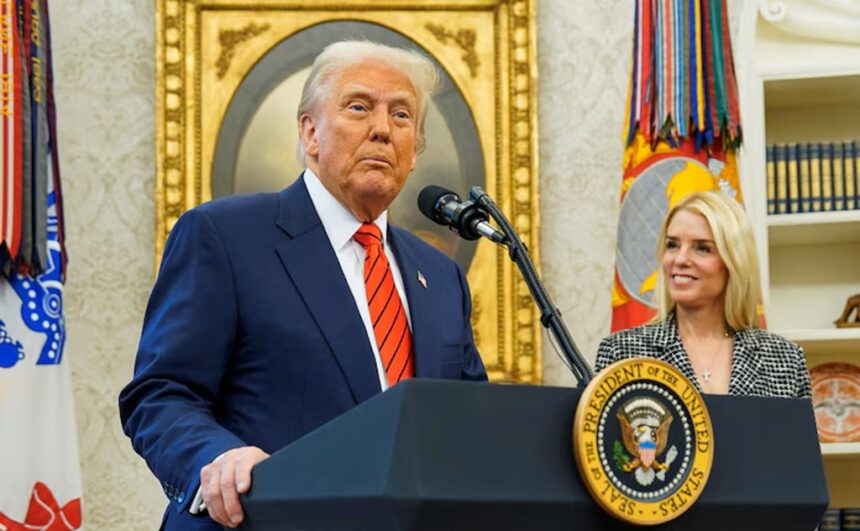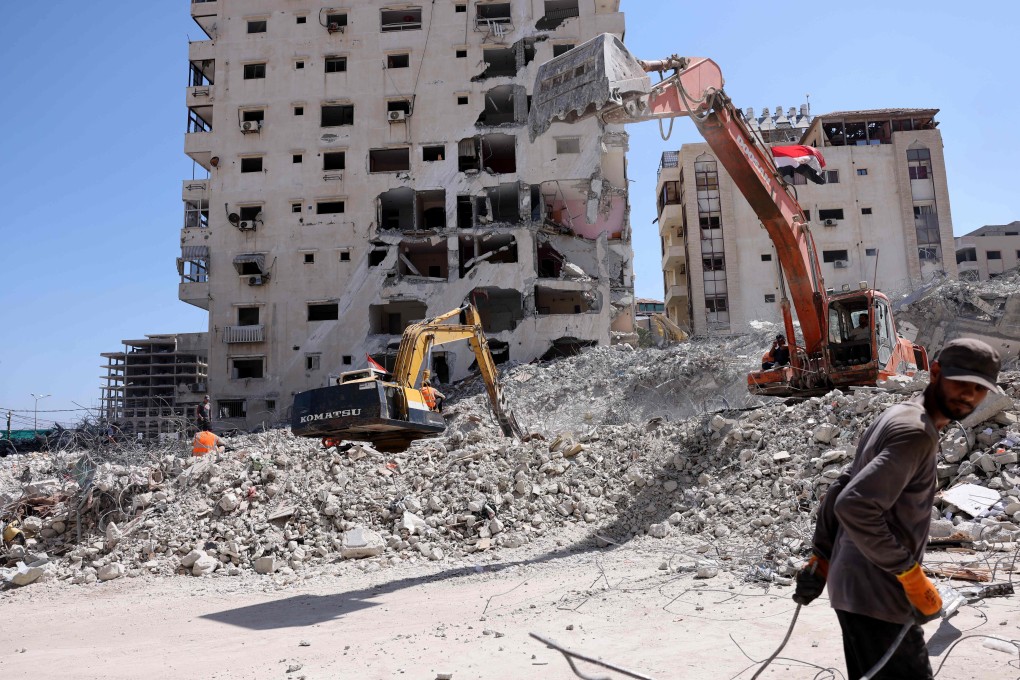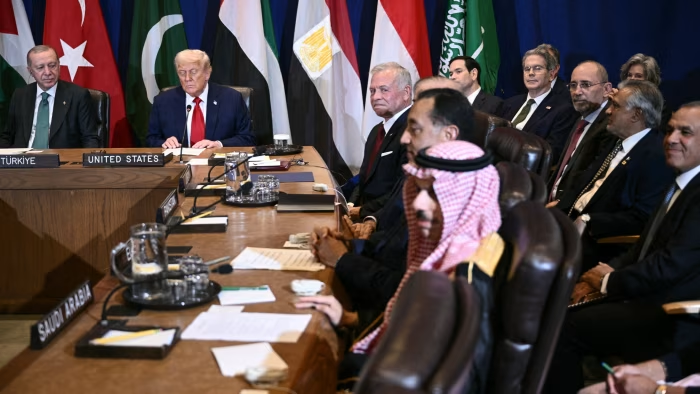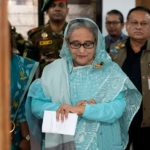WASHINGTON D.C. – A rare sigh of relief echoed worldwide as Hamas said it would release all remaining Israeli hostages, both alive and deceased, under U.S. President Donald Trump’s 20-point plan for Gaza.
The moment arrived days before the second anniversary of the 7 October 2023 Hamas-led attack that triggered the war. It may signal a turning point in one of the most stubborn conflicts of the modern era. Around 48 hostages are still believed to be in Gaza, with roughly 20 thought to be alive.
The plan sets a 72-hour window for their return once a formal ceasefire takes effect. In return, Israel would free 250 Palestinian prisoners serving life terms, along with 1,700 others detained since the war began.
Trump’s high-pressure diplomacy and blunt ultimatums have put Washington back in a lead role, echoing the Abraham Accords from his first term. Celebrations rang from Tel Aviv to Ramallah, yet the deal’s future rests on tough issues like Gaza’s future rule and long-term Palestinian goals.
The proposal dates to 29 September 2025, when Trump unveiled it at the White House alongside Israeli Prime Minister Benjamin Netanyahu. He called it a “historic day for peace,” and demanded an immediate halt to fighting. The plan requires the dismantling of Hamas’s military network, including tunnels and weapons sites, and a full disarmament of the group.
International Stabilization Force
Hamas would give up any place in Gaza’s future governance, directly or indirectly. In its place, a technocratic Palestinian committee would handle daily services, backed by an international “Board of Peace” chaired by Trump.
Figures such as former UK Prime Minister Tony Blair could take part. This interim authority would manage reconstruction with funding from Arab partners and global donors. The stated aim is a deradicalized, terror-free Gaza that poses no threat to Israel, Egypt, or Jordan. Under the blueprint, Israel would pull back its forces in stages, tied to verified steps on demilitarisation by U.S. and Arab guarantors.
A temporary International Stabilization Force, led by Arab states such as Jordan and Egypt, would secure crossings and train a new Palestinian police unit to stop any return of armed groups. Humanitarian aid would ramp up at once if the plan is accepted, matching January 2025 levels.
That means 600 trucks each day for rebuilding infrastructure, restoring hospitals, and clearing rubble, delivered through neutral channels like the UN and the Red Crescent. Hamas members who renounce violence and hand in weapons would be offered amnesty. Those who choose to leave Gaza would be given safe passage to host states.
The plan tackles the power vacuum after Hamas by ruling the group out of authority in any form, a red line for Israel after the 7 October attacks that killed 1,200 people and saw 251 hostages taken. Netanyahu secured Trump’s support after intensive talks in New York with envoy Steve Witkoff and adviser Jared Kushner.
Path to Statehood
He said the proposal meets Israel’s security needs without annexation or an open-ended occupation, a stance that clashes with some in his far-right bloc. The document also leaves space for a political horizon. Once the Palestinian Authority completes reforms set out in Trump’s 2020 plan and in Saudi-French proposals, Gaza could join a credible path towards self-determination and statehood.
It encourages interfaith dialogue to support coexistence. That note of possibility sits awkwardly with Netanyahu’s video after the announcement, in which he ruled out a Palestinian state, showing how fragile the long-term outlook remains.
Hamas issued its reply hours after Trump’s Sunday evening deadline. It agreed in principle on the hostages, but dodged on disarmament and the question of quitting governance. The group said it was ready to “immediately enter negotiations” through Qatar and Egypt, and backed handing Gaza to a “Palestinian body of independents” formed by national consensus.
Media adviser Tahir al-Nounou called Trump’s words “encouraging,” and pointed to openness to prisoner swaps and an end to the war, based on “proper field conditions” such as an Israeli withdrawal. Senior official Mousa Abu Marzouk said no disarmament would occur before the end of the occupation, suggesting weapons could be turned over to a future Palestinian authority.
That position collides with the core of the plan. Internal strains persist between the political leadership in Doha and the Gaza-based military wing. Analyst Mkhaimar Abusada described the choice as “between the bad and the worst.”
Trump posted his reaction on Truth Social: “Based on the Statement just issued by Hamas, I believe they are ready for a lasting PEACE. Israel must immediately stop the bombing of Gaza, so that we can get the Hostages out safely and quickly!”
Trump Addresses the World
In a video from the Oval Office, he called it “a big day,” and thanked Qatar, Turkey, Saudi Arabia, Egypt, and Jordan for working together toward “long-sought PEACE in the Middle East.”
Netanyahu’s office sounded upbeat and said it was ready for “immediate implementation of the first phase” to free hostages. Reports of ongoing Israeli strikes in Gaza City, however, highlight the risks to enforcement. Trump warned that “all hell” would follow if talks broke down.
In Washington, lawmakers across parties voiced broad support. Many saw the deal as a diplomatic win during a period of pressure over aid and security. Senate Majority Leader Chuck Schumer called it “a vital step toward ending the nightmare,” urging a fast return of the hostages and pressing for Palestinian reforms.
House Speaker Mike Johnson praised Trump’s “bold leadership,” backed Israel’s security terms, and promised Congress would support reconstruction funds. Senator Lindsey Graham warned that Hamas’s lack of a clear pledge on disarmament looked like a rejection, and told Qatar to remove leaders who refuse to comply.
Representative Marjorie Taylor Greene said, “Peace is badly needed.” Senator John Fetterman called the plan “encouraging,” while urging solid checks on demilitarisation. Senator Bernie Sanders raised concerns that the proposal lacks firm steps toward statehood and called for UN oversight to avoid an “endless occupation.”
Praise from the World
Bipartisan resolutions are moving to speed aid and track compliance, showing fatigue after 20 billion dollars in U.S. military support for Israel.
World leaders echoed the praise, boosting Trump’s message of unity. French President Emmanuel Macron posted, “The release of all hostages and a ceasefire in Gaza are within reach! Hamas’ commitment must be followed up without delay,” and thanked Trump for “decisive progress toward peace.”
UK Prime Minister Keir Starmer pushed for action “without delay,” calling the move a “significant step forwards.” German Chancellor Friedrich Merz said it offered “the best chance for peace” after two years of suffering. Saudi Arabia, Jordan, the UAE, Qatar, and Egypt issued a joint statement in support and pledged resources for a “just settlement” that protects Palestinian rights and regional stability.
Qatar’s Emir Sheikh Tamim bin Hamad Al Thani voiced support in a call with Trump, and said he was confident in a “just settlement.” Turkey joined talks in Doha as a new mediator, with President Recep Tayyip Erdogan backing the outline despite past criticism.
India’s Prime Minister Narendra Modi welcomed the plan as a move toward “sustainable peace.” Russia also endorsed efforts to “end the tragedy,” according to Kremlin spokesman Dmitry Peskov, reflecting rare alignment.
The United Nations, a constant critic of the war’s cost in lives and displacement, called the proposal a “window of opportunity” to restart aid and free hostages. The UN says more than 66,000 Palestinians have died, and two million have been displaced.
United Nations Welcomes Peace Deal
Secretary-General António Guterres urged all sides to take the chance to end the conflict, and stressed compliance with international law and the two-state framework backed by 142 countries.
UN spokesperson Stéphane Dujarric said shelters in Deir al-Balah and Khan Younis now hold around half a million people, which shows the scale of the humanitarian need. While welcoming the plan, Guterres repeated calls for accountability over alleged war crimes, including ICC warrants involving Netanyahu.
Talks in Doha now turn on bridging hard gaps. Hamas hesitates on disarmament. Israel insists on strict verification. The Palestinian Authority faces a set timeline for reform. Families of hostages hold on to hope. Anat Angrest, whose son Matan is still captive, posted thanks to Trump on X, saying, “After two years of suffering, I feel closer than ever to hug my son again.”
In Gaza, displaced residents like Abdallah Qamar describe the daily struggle, with “no food, no drinks, no clothes,” and look to the plan’s promise of rebuilding. In the West Bank, crowds mark the Nakba anniversary with flags and calls for a path to sovereignty that goes beyond a technocratic interim.
If carried out as written, Trump’s plan could reshape the picture. A demilitarised Gaza could rebuild and grow, while reforms in the West Bank open a path to statehood, and Arab-Israeli ties deepen.
Skeptics, including Palestinian analyst Hanan Ashrawi, warn that there are few safeguards. They fear an open-ended foreign trusteeship that feels like “occupation by proxy.” Israel’s security cabinet is still debating. Hamas leaders are consulting allies. The next 48 hours matter.
As Trump said, “This is not about Gaza alone, this is about long-sought PEACE in the Middle East.” After generations of pain, this fragile deal could offer a route out, or it could prove a prelude to more loss. The world’s attention, from Capitol Hill to the UN, is fixed on Gaza and what comes next.
















